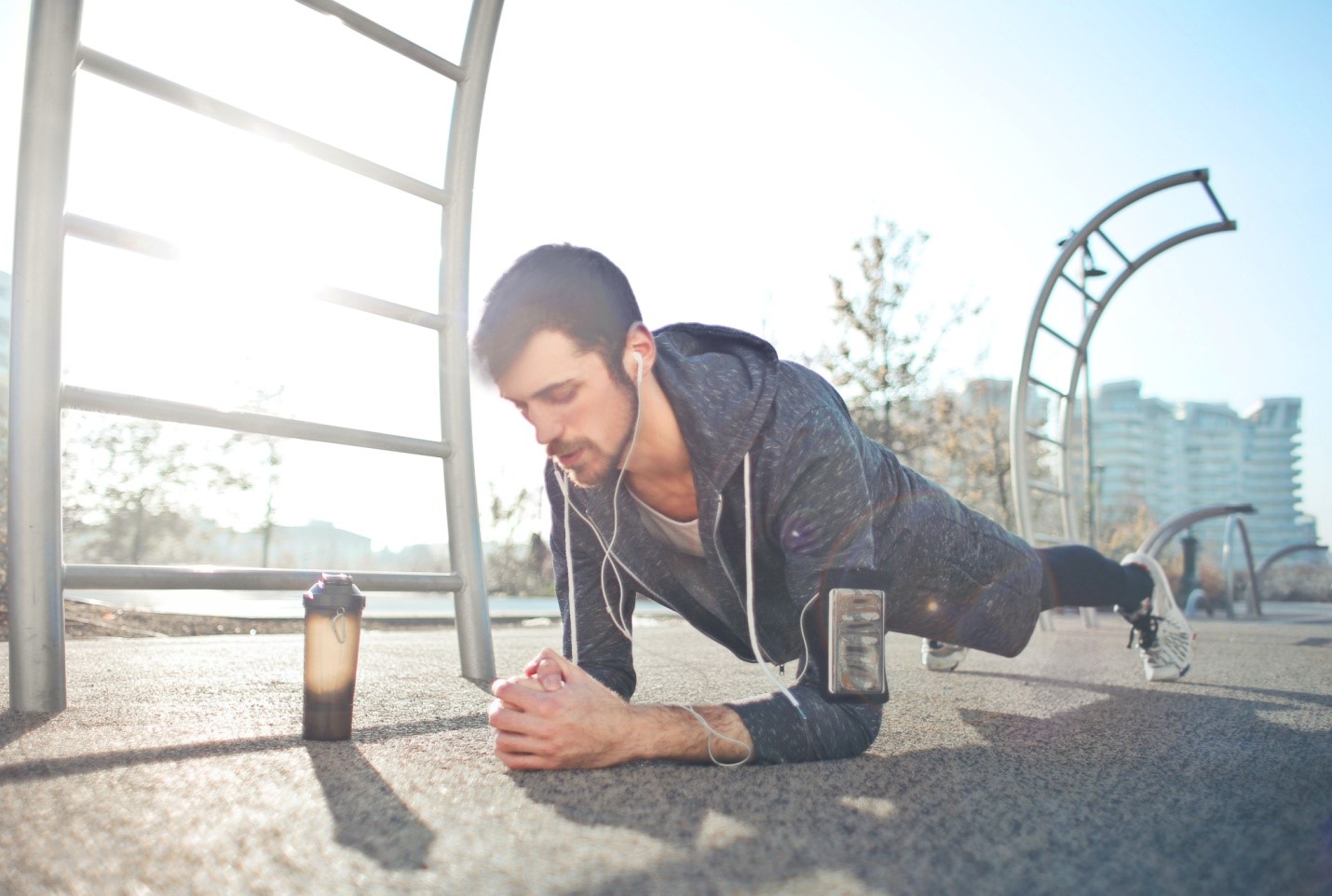Combining trail running and yoga exercises offers a multitude of benefits that can significantly enhance your fitness journey. Both activities complement each other, making them an ideal match for anyone looking to improve their overall performance, flexibility, and mental well-being.
Trail running provides a unique experience as it immerses you in nature, allowing you to escape the hustle and bustle of everyday life. The uneven terrain challenges your balance and strengthens your core, while the varied elevations engage different muscle groups, promoting increased strength and stamina. In addition, the cardiovascular benefits of running on trails are profound, improving your heart health and boosting your endurance.
On the other hand, incorporating yoga into your routine introduces a vital element of flexibility and mindfulness. Here are some key advantages:
- Enhanced Flexibility: Regular yoga practice stretches and lengthens your muscles, reducing the risk of injuries often associated with trail running.
- Mental Clarity: Yoga promotes mindfulness and relaxation, helping to clear your mind before a run and recover afterward.
- Improved Balance: The poses in yoga strengthen stabilizing muscles that are crucial for navigating uneven trail surfaces.
By merging these two practices, you can create a well-rounded fitness regimen that nurtures both your body and mind. Visit our website to learn more and get started today! Click here.
Essential Yoga Poses for Trail Runners

Incorporating specific yoga poses into your routine can greatly benefit trail runners by enhancing flexibility, strength, and balance. Here are some essential yoga poses that are particularly effective for those who hit the trails:
- Downward-Facing Dog: This pose stretches the hamstrings, calves, and shoulders while strengthening the arms and core. It’s a great way to release tension after a long run.
- Warrior II: A powerful pose that builds strength in the legs and opens the hips, Warrior II helps improve your stability and balance, essential for navigating uneven terrain.
- Pigeon Pose: This pose targets the hip flexors and glutes, areas that often tighten during long runs. Pigeon Pose enhances flexibility and aids in recovery.
- Tree Pose: Focusing on balance and concentration, Tree Pose strengthens the legs and improves stability, beneficial for maintaining control on rugged trails.
- Bridge Pose: Strengthening the lower back, glutes, and hamstrings, Bridge Pose also opens the chest and shoulders, counteracting the forward posture often adopted during running.
Incorporating these yoga poses into your routine not only aids in injury prevention but also enhances your overall performance on the trails. Consider dedicating a few minutes before and after your runs to these stretches for maximum benefit.
How to Incorporate Yoga into Your Trail Running Routine

Integrating yoga into your trail running routine can be a game-changer for both your performance and recovery. Here are some effective strategies to seamlessly blend these two activities:
- Pre-Run Warm-Up: Start your running session with a brief 10-15 minute yoga warm-up. Focus on poses that activate your legs, hips, and core, such as Cat-Cow, Sun Salutations, and Low Lunges. This will help prepare your muscles for the trail.
- Post-Run Stretching: After your run, dedicate time to cool down with yoga. Incorporate poses like Child’s Pose and Supine Spinal Twist to relieve tension and promote flexibility, crucial for recovery.
- Weekly Yoga Sessions: Set aside one or two days each week solely for yoga practice. This can help improve your overall strength, flexibility, and mental focus, complementing your running regimen.
- Mindful Breathing: While running, practice mindful breathing techniques learned in yoga. This can enhance your lung capacity and help maintain a steady pace, especially during challenging portions of the trail.
- Integrate Yoga Poses into Trail Runs: If you’re comfortable, try incorporating specific yoga poses during breaks on your trail runs. A few minutes in Tree Pose or Pigeon Pose can refresh your body and mind.
By consistently applying these strategies, you’ll notice improved performance and a deeper connection to your running practice. The fusion of yoga and trail running not only enhances physical capability but also fosters a sense of mindfulness in your journey.
Enhancing Flexibility and Strength with Yoga
One of the most significant benefits of incorporating yoga into your trail running routine is the enhancement of both flexibility and strength. These two elements are crucial for any runner, especially those who tackle uneven and challenging terrains. Here’s how yoga contributes to these aspects:
- Dynamic Stretching: Yoga emphasizes dynamic stretches that improve the range of motion in your joints. Poses like Warrior II and Triangle Pose stretch and strengthen your legs, hips, and back, enabling you to move more freely on the trails.
- Core Strength: Many yoga poses, such as Plank and Boat Pose, focus on core stability. A strong core supports your running form, helping to prevent injuries and improve your endurance on longer runs.
- Balance and Stability: Yoga poses like Tree Pose and Eagle Pose enhance balance, which is essential when navigating rocky or uneven trails. Improved stability lowers the risk of falls and allows for more confident strides.
- Muscle Recovery: The stretching involved in yoga helps alleviate muscle tightness and soreness post-run. Poses such as Forward Fold and Legs-Up-the-Wall promote blood flow to sore muscles, speeding up recovery and keeping you ready for your next adventure.
- Mind-Body Connection: Engaging in yoga fosters a deeper awareness of your body, helping you identify areas of tension or weakness that need attention. This awareness can lead to better form and technique in your trail running.
By focusing on enhancing flexibility and strength through yoga, you’ll not only improve your trail running performance but also cultivate a balanced and resilient body, ready to take on any challenge the trails present.
Preventing Injuries Through Yoga Practices

In the world of trail running, injury prevention is paramount. Runners often face challenges such as sprains, strains, and overuse injuries due to the demanding nature of off-road terrains. Integrating yoga practices into your routine can significantly reduce the risk of injuries. Here’s how:
- Increased Flexibility: Yoga enhances flexibility in key muscle groups, particularly in the hips, hamstrings, and calves. Greater flexibility means muscles can extend more comfortably without overstretching, reducing the likelihood of strains during runs.
- Strengthening Weak Areas: Regular yoga practice targets often neglected muscles, particularly in the core and stabilizing muscles in the legs. Strengthening these areas helps support proper running mechanics, which can prevent injuries caused by muscle imbalances.
- Improved Balance: Many yoga poses challenge your balance, which translates to better stability on the trails. Enhanced balance helps you navigate uneven ground and reduces the risk of falls and ankle sprains.
- Mindfulness and Body Awareness: Yoga cultivates mindfulness, allowing you to tune into your body’s signals. Being more aware of tension or discomfort can help you adjust your running technique or stop when necessary, preventing injuries before they occur.
- Breath Control: Proper breathing techniques learned in yoga can improve your overall endurance and performance. Deep, controlled breathing ensures that your muscles receive adequate oxygen during runs, which can help stave off fatigue-related injuries.
By dedicating time to yoga, you not only enhance your physical capabilities but also foster a proactive approach to injury prevention. This holistic practice ensures that you can enjoy the trails longer and with greater confidence.
Creating a Balanced Workout Plan with Trail Running and Yoga

To truly reap the benefits of both trail running and yoga, it’s essential to create a balanced workout plan that integrates both practices effectively. This approach not only maximizes fitness gains but also promotes overall well-being. Here are some strategies to consider:
- Set Clear Goals: Determine what you want to achieve with your workout plan. Whether it’s improving endurance, increasing flexibility, or simply enjoying the great outdoors, having clear objectives will guide your training.
- Schedule Your Sessions: Allocate specific days for trail running and yoga. For example, you might run on weekdays and reserve weekends for yoga sessions to allow your body to recover. Aim for a mix of high-intensity runs and restorative yoga practices.
- Cross-Train Wisely: Incorporate strength training and other forms of cardio into your routine alongside trail running and yoga. This variety will prevent burnout and keep your workouts fresh and engaging.
- Listen to Your Body: Pay attention to how your body responds to both trail running and yoga. Modify your plan as needed to accommodate fatigue or soreness. Balancing intensity with recovery is crucial for long-term progress.
- Be Consistent: Consistency is key to seeing results. Commit to your workout plan, and make adjustments as necessary to keep it sustainable and enjoyable.
By thoughtfully combining trail running and yoga, you can create a dynamic workout plan that enhances your fitness, flexibility, and mental clarity. This synergy not only keeps your routine exciting but also empowers you to embrace the joy of movement fully. Visit our website to learn more and get started today! Click here.


